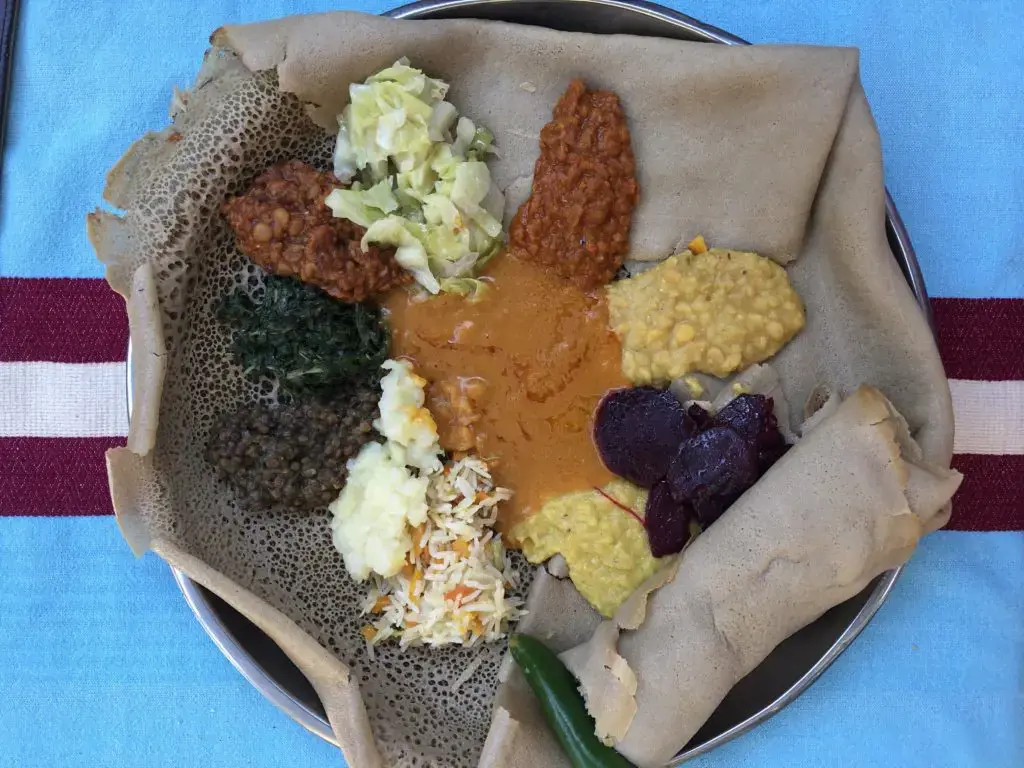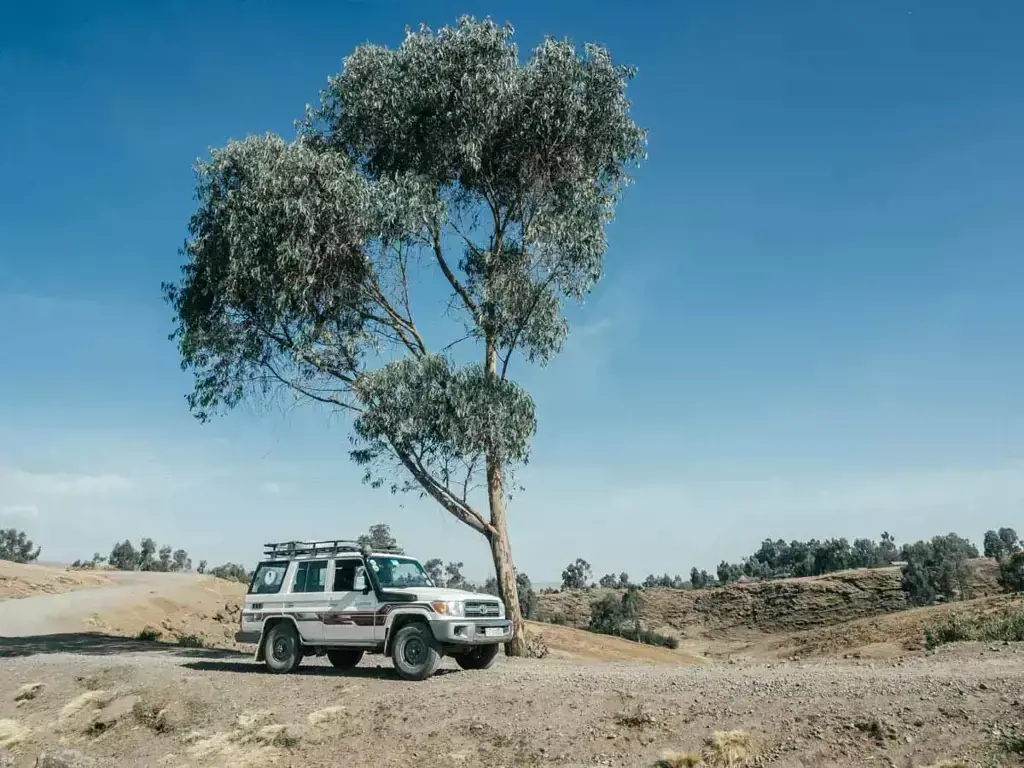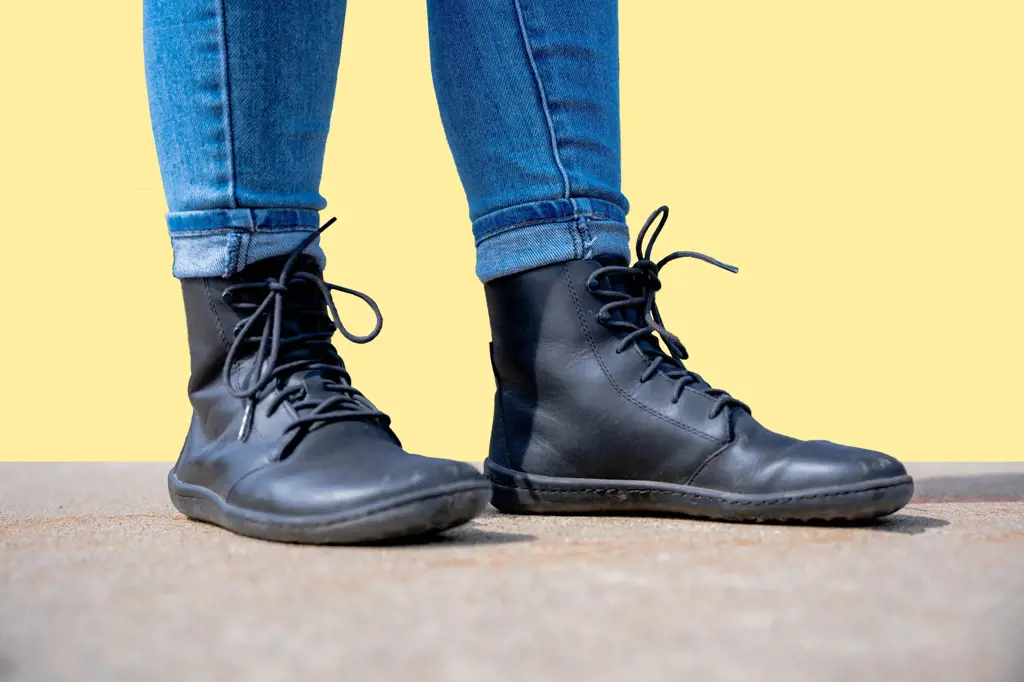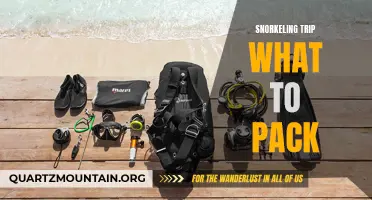
Ethiopia, a breathtakingly beautiful country in East Africa, offers travelers a unique and unforgettable experience. From the historical rock churches of Lalibela to the stunning landscapes of the Simien Mountains, Ethiopia has no shortage of sights to see and adventures to embark on. To make the most of your trip and ensure a comfortable and enjoyable experience, it's essential to pack the right items. In this article, we will explore the essential items you should include in your luggage for a memorable trip to Ethiopia. So grab your backpack and let's get packing!
| Characteristics | Values |
|---|---|
| Language | Amharic, Oromo, Tigrinya |
| Currency | Ethiopian Birr |
| Time Zone | East Africa Time (EAT) |
| Visa Requirements | Most nationalities require a visa to enter Ethiopia |
| Climate | Varies from highlands to lowlands |
| Clothing | Lightweight and breathable for warm weather, warmer layers for cooler evenings |
| Medications | Anti-malarial medication may be required depending on the region visited |
| Vaccinations | Recommended vaccinations include Hepatitis A, Typhoid, and Yellow Fever |
| Safety | Take precautions against petty theft and be aware of political unrest |
| Transportation | Public transportation options include taxis and minibusses |
| Food | Traditional Ethiopian cuisine includes injera, spicy stews, and various vegetarian dishes |
| Electrical Outlets | Type C and Type E |
| Communication | Mobile phone coverage is widely available in major cities |
What You'll Learn
- What are the essential items to pack when traveling to Ethiopia?
- Are there any specific clothing recommendations for women visiting Ethiopia?
- Are there any cultural norms or customs to be aware of when packing for a trip to Ethiopia?
- What kind of footwear is most suitable for exploring Ethiopia's terrain?
- Are there any specific health and safety items that should be included in a travel packing list for Ethiopia?

What are the essential items to pack when traveling to Ethiopia?

When traveling to Ethiopia, it is important to pack essentials that will help you have a comfortable and enjoyable trip. Here are some of the essential items you should consider packing when planning your trip to Ethiopia.
- Clothing: Ethiopia has a diverse climate, so it is important to pack clothes that are suitable for varying weather conditions. Lightweight and breathable clothing is recommended, especially for the hotter regions such as the Danakil Depression. However, it is also advisable to pack warmer layers for cool nights and highland areas like the Simien Mountains. Additionally, pack conservative clothing that covers your shoulders and knees, especially when visiting religious sites and rural areas.
- Comfortable walking shoes: Ethiopia is a country that offers many opportunities for exploration and hiking. Whether you plan on visiting historic sites, trekking through national parks, or walking through cities, a pair of comfortable walking shoes is a must. Opt for closed-toe shoes that provide good support and grip to ensure comfort and safety during your travels.
- Travel adapter: Ethiopia uses Type C (European-style) and Type E (French-style) power outlets. Depending on the country you are traveling from, you may need a travel adapter to charge your electronic devices or use electrical appliances. It is best to carry a universal travel adapter to ensure compatibility with different outlets.
- Medications and toiletries: It is advisable to pack a basic first aid kit with essential medications such as pain relievers, antihistamines, and any prescription medications you may need. Insect repellent, sunscreen, hand sanitizer, and wet wipes are also essential items to pack. Additionally, ensure you have any necessary personal hygiene items such as toilet paper and menstrual products, as these may not be readily available in all areas.
- Travel insurance: It is always recommended to have travel insurance when visiting any foreign country, including Ethiopia. Travel insurance can provide coverage for medical emergencies, trip cancellations, lost luggage, and other unforeseen circumstances. Be sure to review the policy carefully and ensure it covers the activities and destinations you plan to engage in during your trip.
- Travel documents: Don't forget to pack your passport with at least six months' validity from your date of entry into Ethiopia. You will also need to carry a printed copy of your e-visa or visa confirmation if required. It is wise to have a digital backup of all your important travel documents and store them securely in cloud storage or email them to yourself for easy access.
- Cash and credit cards: While credit cards are becoming more widely accepted in urban areas, it is still advisable to carry some cash in Ethiopian Birr for smaller transactions or when visiting rural areas. It is also worth informing your bank and credit card company about your travel plans to avoid any issues with using your cards abroad.
- Guidebook or phrasebook: Ethiopia is a culturally rich and diverse country, and having a guidebook or phrasebook can greatly enhance your travel experience. It can help you learn about the history, culture, and customs of Ethiopia, as well as provide useful phrases in the local languages such as Amharic.
These are just a few of the essential items to consider packing when traveling to Ethiopia. Remember to check the weather conditions of the specific regions you plan to visit and pack accordingly. By being prepared, you can ensure a smooth and enjoyable trip to this beautiful country.
The Ultimate Guide to Packing for January in Los Angeles
You may want to see also

Are there any specific clothing recommendations for women visiting Ethiopia?

When visiting Ethiopia, it's important to dress modestly and respect the local culture. Here are some clothing recommendations for women to ensure a comfortable and culturally appropriate experience:
- Covering the shoulders: Ethiopian culture values modesty, so it is recommended to cover your shoulders. Opt for tops or dresses with short sleeves or bring a lightweight shawl or scarf to cover your shoulders when necessary.
- Avoid revealing clothing: It is best to avoid clothing that shows too much skin such as shorts, tank tops, or low-cut tops. Instead, choose loose-fitting and more conservative clothing options.
- Long skirts or dresses: Ethiopian women often wear long skirts or dresses as part of their traditional attire. Consider wearing these types of garments to blend in and show respect for the local culture. Flowy or A-line skirts and dresses are also suitable for the country's warm climate.
- Comfortable footwear: As Ethiopia is known for its rugged terrain, it is recommended to wear sturdy and comfortable footwear. Closed-toe shoes or sandals with good grip are ideal, especially if you plan to explore rural areas or go hiking.
- Light and breathable fabrics: Ethiopia can get incredibly hot, so it is important to choose clothing made from light and breathable fabrics like cotton or linen. These materials will help you stay cool and comfortable throughout your visit.
- Cultural sensitivity: Ethiopian culture is diverse, and different regions may have specific dress customs. It's always a good idea to research the particular area you plan to visit and dress accordingly to show respect for the local traditions and customs.
Example:
When visiting Addis Ababa, the capital city of Ethiopia, women often wear more Western-style clothing. However, when visiting remote areas or rural villages, it is best to follow the local dress code and cultural norms. This may mean opting for long skirts or dresses and covering your shoulders with a shawl or scarf.
Overall, dressing modestly and respectfully is key when visiting Ethiopia. By following these clothing recommendations, you will not only feel more comfortable in the local climate but also show appreciation for Ethiopian culture.
Essential Items to Pack for a Long-Distance Hike on the Pacific Crest Trail
You may want to see also

Are there any cultural norms or customs to be aware of when packing for a trip to Ethiopia?

When planning a trip to Ethiopia, it's important to be aware of the cultural norms and customs in order to pack appropriately. Ethiopia is a diverse country with a rich cultural heritage, and respecting these customs will help ensure a positive and respectful travel experience. Here are a few things to keep in mind when packing for your trip:
- Dress modestly: Ethiopia is a largely conservative country, and it's important to dress modestly, especially when visiting religious sites or rural areas. Both men and women should avoid wearing revealing clothing such as tank tops, shorts, or short skirts. Instead, opt for lightweight and loose-fitting clothing that covers your shoulders and knees. This will not only show respect for the local customs but also help protect you from the sun.
- Pack appropriate footwear: Ethiopia has diverse landscapes, ranging from rugged mountains to arid deserts to lush countryside. It's important to have appropriate footwear for your activities. Comfortable walking shoes or hiking boots are essential if you plan to explore the natural beauty of the country. Sandals or flip-flops are suitable for more casual outings, but make sure they are sturdy and provide good support.
- Consider the weather: Ethiopia has varying climates depending on the region and altitude. It's advisable to pack layers of clothing to cater to changing weather conditions. In the highlands, where the temperature can drop significantly especially at night, pack warm clothing such as sweaters, jackets, and scarves. In the lowlands and desert areas, lightweight and breathable clothing will be more suitable. Also, don't forget to pack a raincoat or umbrella as Ethiopia has distinct rainy seasons.
- Respect local traditions: Ethiopia has a strong cultural identity and many unique traditions. It's important to respect these customs in order to be welcomed by the local community. For example, when visiting churches or monasteries, it's customary to remove your shoes before entering. Women should cover their heads with a scarf or shawl while inside these religious sites. Additionally, avoid taking photographs of people without their consent, especially in rural areas, as it may be considered offensive.
- Pack essentials for rural areas: If you plan to venture into rural areas or small villages, it's important to pack essential items such as a flashlight, mosquito repellent, and a first aid kit. These items may not be readily available in remote areas, so it's better to be prepared. Also, carrying small gifts such as pens or candies can be a gesture of goodwill when interacting with local communities.
In conclusion, packing for a trip to Ethiopia requires taking into account the cultural norms and customs of the country. By dressing modestly, respecting local traditions, and being prepared for varying climates and landscapes, you'll be well-equipped to have an enjoyable and respectful travel experience in Ethiopia.
Essential Packing List for Auxiliares de Conversación: What You Need to Bring
You may want to see also

What kind of footwear is most suitable for exploring Ethiopia's terrain?

When it comes to exploring the diverse terrain of Ethiopia, it is important to have the right footwear. The country offers a plethora of landscapes, from rugged mountains to lush forests, and from arid deserts to fertile farmlands. To ensure a comfortable and safe exploration, it is crucial to choose the most suitable footwear for the specific terrain you will be traversing.
For mountainous regions such as the Simien Mountains or the Bale Mountains, sturdy hiking boots are a must. These boots provide ankle support and have a strong grip, which is essential for navigating through steep and uneven paths. They also offer protection against sharp rocks and potential ankle injuries. It is advisable to choose waterproof boots as the weather in these regions can be unpredictable, and you may encounter muddy trails or even rain.
In the forests of Ethiopia, where vegetation is dense and the ground may be soggy, waterproof hiking shoes are a good choice. These shoes are lightweight and breathable, allowing your feet to remain dry and comfortable as you explore the lush greenery. Additionally, they possess a good grip to help you navigate slippery terrain and roots.
For arid deserts and sandy areas like the Danakil Depression or the Dallol Volcano, it is recommended to wear closed-toe sandals or lightweight hiking shoes. These types of footwear provide adequate protection for your feet while allowing them some breathability. They are particularly suitable for hot weather conditions and offer flexibility when walking on sandy surfaces.
In rural areas and farmlands of Ethiopia, such as the Omo Valley, you may need to wear sturdy boots that offer protection against thorns and sharp objects. The terrain in these regions can be rough and uneven, and there may be hidden hazards like agricultural tools or sharp branches. Boots with a reinforced toe cap and a thick sole will ensure your feet remain safe and comfortable throughout your exploration.
It is important to note that regardless of the terrain you will be exploring in Ethiopia, it is advisable to break in your footwear before embarking on your journey. New shoes or boots can cause blisters and discomfort, which can hinder your exploration and enjoyment of the beautiful landscapes. Take the time to wear your chosen footwear for walking or hiking before your trip to ensure they are comfortable and well-fitted.
In conclusion, the most suitable footwear for exploring Ethiopia's diverse terrain depends on the specific region you plan to explore. Sturdy hiking boots are necessary for mountainous areas, while waterproof shoes are recommended for forests. Closed-toe sandals or lightweight hiking shoes are suitable for arid deserts, and sturdy boots are essential for rural areas. Whichever footwear you choose, remember to break them in before your journey to ensure comfort and safety throughout your exploration.
Preparing for a Trip to the Amazon Rainforest Fire: Essential Packing Guide
You may want to see also

Are there any specific health and safety items that should be included in a travel packing list for Ethiopia?

When preparing for a trip to Ethiopia, it is important to pack items that will ensure your health and safety throughout your journey. Ethiopia is a beautiful country with diverse landscapes and rich cultural heritage, but it also presents some unique health and safety challenges. To help you stay safe and healthy, here are some specific items that should be included in your travel packing list for Ethiopia.
- Insect repellent: Ethiopia is known for its mosquito-borne diseases, such as malaria and dengue fever. It is crucial to protect yourself from insect bites by using a high-quality insect repellent. Look for a product that contains DEET or other effective repellent ingredients, and apply it to exposed skin and clothing.
- Anti-malarial medication: Malaria is a serious concern in Ethiopia, especially in certain regions. Consult with your healthcare provider before your trip and take the necessary anti-malarial medication as prescribed. Remember to continue taking the medication after you return, as some forms of malaria can lie dormant in your body.
- Sun protection: Ethiopia has a high altitude, which means that the sun's rays are stronger and can cause sunburn more easily. Pack sunscreen with a high SPF, sunglasses, and a wide-brimmed hat to protect your skin and eyes from the sun.
- Water purification tablets: The tap water in Ethiopia is not safe for drinking. To avoid gastrointestinal illnesses, pack water purification tablets or a water filter to purify the water you consume. It is also advisable to drink bottled or boiled water whenever possible.
- Basic first aid kit: A small first aid kit can come in handy in case of minor injuries or illnesses. Include items such as band-aids, antiseptic ointment, pain relievers, and any prescription medication you require.
- Hand sanitizer: Access to clean water and soap may be limited, especially when traveling in rural areas. Carry a small bottle of hand sanitizer to keep your hands clean and prevent the spread of germs.
- Prescription medications: If you take any prescription medications, make sure to bring an ample supply for the duration of your trip, along with a copy of the prescription. It is also a good idea to carry a note from your doctor explaining the necessity of the medication.
- Travel insurance: Health and safety incidents can happen even when you take all the necessary precautions. Before traveling to Ethiopia, consider purchasing travel insurance that covers medical expenses, emergency evacuation, and trip cancellation. This will provide you with peace of mind in case of any unforeseen circumstances.
It is essential to research the specific health and safety concerns for the region of Ethiopia you plan to visit and consult with a healthcare professional before your trip. They can provide you with personalized advice and information based on your medical history and itinerary. By taking the necessary precautions and packing the right items, you can enjoy your trip to Ethiopia while minimizing health and safety risks.
Essential Items to Pack for Your Trip to Kathmandu
You may want to see also
Frequently asked questions
Overall, Ethiopia is considered to be a safe country to travel to. However, like any other destination, it is important to take basic precautions to ensure your safety. It is advisable to avoid traveling to remote border regions due to potential conflicts. It is also recommended to be cautious in crowded areas and to keep an eye on your belongings at all times.
The best time to visit Ethiopia is during the dry season, which typically runs from October to May. This is when the weather is most pleasant, with less rainfall and moderate temperatures. However, it's worth noting that Ethiopia has a diverse climate and the timing of your visit may depend on the specific region you plan to explore.
When packing for a trip to Ethiopia, it is important to consider the diverse weather conditions and the activities you plan to engage in. It is recommended to pack lightweight and breathable clothing for the warm temperatures during the day. However, it is also wise to pack a jacket or sweater for cooler evenings, especially if you're visiting higher altitude areas. Additionally, don't forget essentials such as a hat, sunglasses, sunscreen, and comfortable walking shoes. If you plan to go on hikes or explore national parks, it's also a good idea to bring insect repellent and a first aid kit.
Yes, it is important to be respectful of Ethiopia's culture and dress modestly, especially when visiting religious sites. For both men and women, it is best to avoid wearing revealing clothing, such as shorts, skirts above the knee, or sleeveless tops. It is also customary to remove your shoes when entering someone's home or a place of worship. In some areas, it is considered impolite to eat with your left hand, so try to use your right hand when eating or greeting others.







